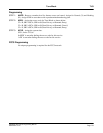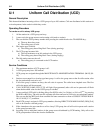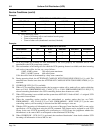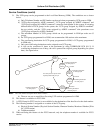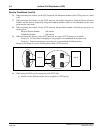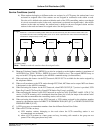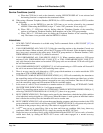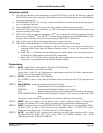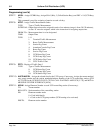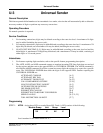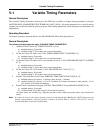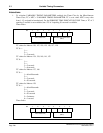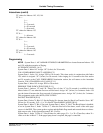
NEAX2400 IPX Feature Programming Manual
Page 782 NDA-24297, Issue 1
U-1 Uniform Call Distribution (UCD)
Service Conditions (cont’d)
c.) When the CCIS line is used as the alternative routing, SERVICE DISPLAY is not activated and
the hunting function is completed at the terminated station.
49. When using a Phantom Telephone Number (PHTELN) for a UCD controlling station via FCCS, consider
the following:
a.) Whether to use the PHTELN to start the UCD hunt or not can be selected by the command
APHNN. When using the PHTELN, assign “1” in the “PH” parameter. If not, assign “0”.
b.) When “PH = 1”: UCD hunt starts by dialing either the Telephone Number of the controlling
station or its Phantom Telephone Number. Both numbers can be the UCD group number.
c.) When “PH = 0”: UCD hunt starts by dialing the Telephone Number of the controlling station
only. The feature is not provided when the PHTELN is dialed.
Interactions
1. UCD PEG COUNT information is available using Traffic commands. Refer to PEG COUNT [P-7] for
more information.
2. CALL FORWARDING-ALL CALLS [C-5]: Only the controlling station or the Attendant Console can
activate this feature. When activated, calls to the UCD group will be diverted. If the destination station is
busy, busy tone is returned to the calling party. If the UCD group number is a Phantom Number, CALL
FORWARDING-ALL CALLS [C-5] cannot be activated.
3. CALL FORWARDING ALL CALLS/BUSY LINE [C-2, 5]: When a member station in a UCD group
activates CALL FORWARDING-ALL CALLS [C-5] or CALL FORWARDING-BUSY LINE [C-2],
only calls directed to that station are forwarded. UCD group calls are not affected. UCD calls will bypass
the call forwarded station.
4. CALL FORWARDING-DON’T ANSWER [C-3]: All calls terminating at a UCD station will forward if
the call is not answered before the Call Forwarding timer expires.
5. There is no peg count for calls directed to a UCD group which terminate to a station outside the UCD
group due to CALL FORWARDING [C-2, 3, 5].
6. ATTENDANT CAMP-ON WITH TONE INDICATION [A-1]: UCD calls extended by the Attendant to
the controlling station will not camp-on unless all of the non-controlling stations are either busy or in the
Busy Out state, and the controlling station is engaged in a two-way conversation. Then the call will camp-
on to the controlling station and will terminate at the first available station.
7. In the event of a non-UCD call extended to a member station of a UCD Group, ATTENDANT CAMP-
ON WITH TONE INDICATION [A-1] will operate normally.
8. If the UCD controlling station answers an ATTENDANT CAMP-ON WITH TONE INDICATION [A-1]
call using CONSULTATION HOLD-ALL CALLS [C17], there is no peg count.
9. BUSY VERIFICATION [B-3]: This feature can be used by the Attendant to check the busy/idle condition
of an individual station assigned to a UCD group. When this feature is used against an individual station
that is idle but has set Busy Out, the Attendant will receive reorder tone.
10. BUSY VERIFICATION [B-3] will activate the normal hunting sequence, and the next station in the UCD
group scheduled to receive the call will be rung. BUSY VERIFICATION [B-3] will operate only when all
the stations in the group are busy, and only if the station is engaged in an actual call.
11. A D
term
user can set or cancel Busy Out at any time and from any condition (idle, busy, three-way
conference, PRIVACY RELEASE [P-18]), simply by pressing the BUSY OUT key.
12. Single-line users can set Busy Out by going off-hook and dialing the BUSY OUT access code, or from the
switch hook flash, by dialing the BUSY OUT access code when engaged in a normal two-way
conversation.




